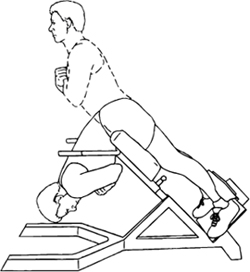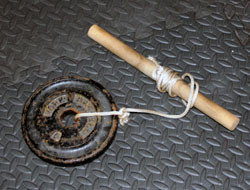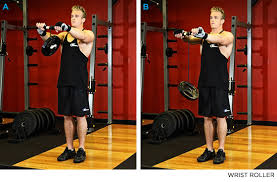Feature Photo:
Model: Lindsay Blair
Photographer: Dylan Fox
Intro
The word “core” is a collective term used to describe the muscles of your midsection. They include, but are not limited to the rectus abdominis, internal/external obliques, transverse abdominal, quadratus lumborum, and spinal erectors. While these muscles have their own individual functions, they also work together in almost every movement you make.
I’m frequently asked which exercises you should be doing in order to get a great looking core. Unfortunately, my answer is not what you want to hear, because a sculpted core is not built in the gym, but in the kitchen through dieting (not crunches on the counter lol). In fact, athletes with some of the most aesthetically pleasing mid-sections you’ve ever seen, may not even directly work them. This common misconception derives from the belief of “spot-training”, or the act of burning fat in a particular area by simply training it. While there may be some metabolic improvements caused by increased muscle, it’s far too inefficient to be the sole path to a shredded 6-pack.
Before you completely write-off that 10 minute abdominal workout you do at the end of your workout, you should be aware that core work still has great value. Remember, the body is not designed to look good- its designed for function. These functions include stability, strength, balance, etc. Therefore, the better your core, the easier it is to maintain good form and prevent injury. Most say you should train legs because it’s your foundation, I would disagree, your core is.
Warm-up
- Abdominal bracing- while lying on your back, contract your midsection. This does not mean suck them in, this means squeeze as they are. Hint: tighten your midsection as if someone were going to punch you there.
- Warm-up sets: perform 1-2 easier sets of the exercise so that you can become more familiar with the form and movement.
Working Sets
Oblique Kayaks: 3 Sets x Perform reps as your fitness level allows; 60s rest
Set-up: You will need a weight bar and a decline bench. Sit normally on the bench, as you would for a sit-up.
Execution: Lean back until your hips are at a 90 degree angle, you should feel the tension of your core holding your body up at this point. Hold the bar with a shoulder-width grip, and your elbows tight to your sides. Using your core, and not your arms, twist your core to resemble paddling in a kayak. Remember, your core does all the movement, not your arms!
Tips: I typically do these until I have about 20% of my energy left, at that point I use the remaining energy to perform Russian twists until just before failure.
Decline Bench Reverse Crunch: 2 sets of 10-20 reps; superset with next exercise
Set-up: You will need a decline bench, much like you did with the first exercise. You will need to lay the opposite direction.Hold on to bench above your head to keep yourself from sliding down. I typically grab the leg pads. (see pic for set-up)
Execution: Begin by contracting your core and raising your legs; knees slightly bent. Then, using your core, bend your knees and bring them to your chest until you reach a tight contraction. Then, slowly extend your legs back out to the starting position without touching the ground; repeat.
Tips: To ensure you are working your core and not just your legs (which may burn), make sure you slightly roll your hips as you crunch. This movement should be subtle, but it should be done for a quality contraction.

Exercise ball DB crunch: 3 sets of 15 reps; 60s rest
Set-up: You will need a dumbbell (usually 5-15lbs will suffice), and an exercise ball. Begin by sitting on the ball, then in a controlled fashion, roll your body down until you are on your back. I typically like to position the ball so that I feel I am holding my head and shoulders up. Your feet should be wider than shoulder width for a solid base. You should hold the dumbbell behind your head, but not touching. Keep your elbows flared outward.
Execution: Begin by bracing your core, and picking a spot on the ceiling to stair at (look at head position in example). I typically like to pick one about 10 feet in front of me. Now, perform a crunch. This is not a

sit-up, so your hips should remain still. All the movement should be made between your chest and your hips. After you have crunched up into a solid contraction, slowly control your way back down until just below the starting position.
Tips: The particular exercise is best described by looking at the example picture. Stay on top of the ball, keep elbows wide, and only crunch at the stomach.
Back Raises: 3 sets of 15 reps; 30s rest
Set-up: You will need a lumbar extension pad, and possibly a barbell plate. Adjust the pad height so that it rests just below the crease of your hips.
Execution: Begin by contracting your core. Drop your torso using your hips until just before your back rolls. This is important, as the movement should be solely in your hips. Then, keeping your core braced, use your lower back to raise up to a straight position. A common

mistake is to hyper-extend (over raise), this is unnecessary and unhealthy-avoid it.
Tips: If using weight, hold the plate firmly against your chest with a crossed-arm grip. Remember, you should avoid excessive rolling of the back. This may take practice, and may be limited to the individuals flexibility range of motion.
Last note:
- Core workouts are funny, because a particular exercise may work greatly for one person, and not at all for another. It all comes down to the person’s body and their balances or lack there of.
- Also, if you are new to working out, don’t be alarmed if you feel a burn in your lower back. This is usually fatigue, and will improve as you continue with future workouts.
- Core should be done at the end of a workout, you need them for stability, so it wouldn’t be wise to fatigue them first.
- Core should also be done every other day. Doing them daily can lead to overworking, and that can cause issues.
PRAY
God gave you another day, and another healthy workout.
Kyle Blair, BS Exercise Physiology, CPT, SPT








